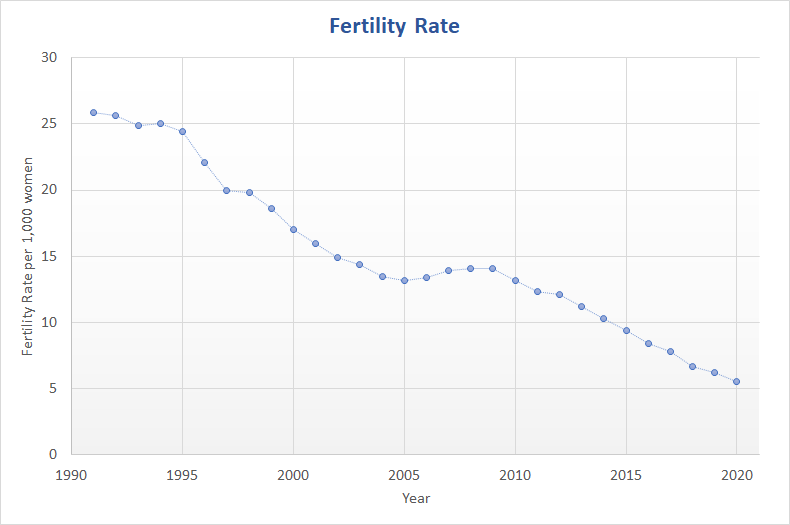92 Adolescent Sexual Activity
Martha Lally; Suzanne Valentine-French; and Dinesh Ramoo
By about age ten or eleven most children experience increased sexual attraction to others that affects social life, both in school and out (McClintock and Herdt, 1996). By the end of high school, more than half of boys and girls report having experienced sexual intercourse at least once, though it is hard to be certain of the proportion because of the sensitivity and privacy of the information (Center for Disease Control, 2004; Rosenbaum, 2006).
Adolescent pregnancy: The last quarter of the twentieth century has seen a decline in Canada’s teenage pregnancy rate. This reflects the availability of contraceptives, and increasing awareness of the risks of unprotected sex. Between 1996 and 2006, the teenage pregnancy rate dropped by 36.9 percent (McKay and Barrett, 2010).
Although adolescent pregnancy rates have declined since 1991, teenage birth rates in the United States are higher than most developed countries. In 2014 females aged fifteen to nineteen experienced a birth rate of 24.2 per 1,000 women. This is a drop of 9 percent from 2013. Birth rates fell 11 percent for those aged fifteen to seventeen and 7 percent for those eighteen and nineteen. It appears that adolescents seem to be less sexually active than in previous years, and those who are sexually active seem to be using birth control (CDC, 2016).

Risk factors for adolescent pregnancy: Miller, Benson, and Galbraith (2001) found that parent–child closeness, parental supervision, and parents’ values against teen intercourse (or unprotected intercourse) decreased the risk of adolescent pregnancy. In contrast, residing in disorganized/dangerous neighbourhoods, living in a lower socioeconomic family, living with a single parent, having older sexually active siblings or pregnant/parenting teenage sisters, early puberty, and being a victim of sexual abuse place adolescents at an increased risk of adolescent pregnancy.
Consequences of adolescent pregnancy: After the child is born, life can be difficult for a teenage mother. Only 40 percent of teenagers who have children before age eighteen graduate from high school. Without a high school degree, job prospects are limited and economic independence is difficult. Teen mothers are more likely to live in poverty, and more than 75 percent of all unmarried teen mothers receive public assistance within five years of the birth of their first child. Approximately 64 percent of children born to unmarried teenaged mothers who did not finish high school live in poverty. Further, a child born to a teenage mother is 50 percent more likely to repeat a grade in school and is more likely to perform poorly on standardized tests and drop out before finishing high school (March of Dimes, 2012).
Research analyzing the age that men father their first child and how far they complete their education have been summarized by the Pew Research Center (2015) and reflect the research for females. Among dads aged twenty-two to forty-four, 70 percent of those with less than a high school diploma say they fathered their first child before the age of twenty-five. In comparison, less than half (45 percent) of fathers with some college experience became dads by that age. Additionally, becoming a young father occurs much less for those with a bachelor’s degree or higher, as just 14 percent had their first child prior to age twenty-five. Like men, women with more education are likely to be older when they become mothers.
Media Attributions
- Figure 6 8 © Dinesh Ramoo is licensed under a CC BY-SA (Attribution ShareAlike) license

